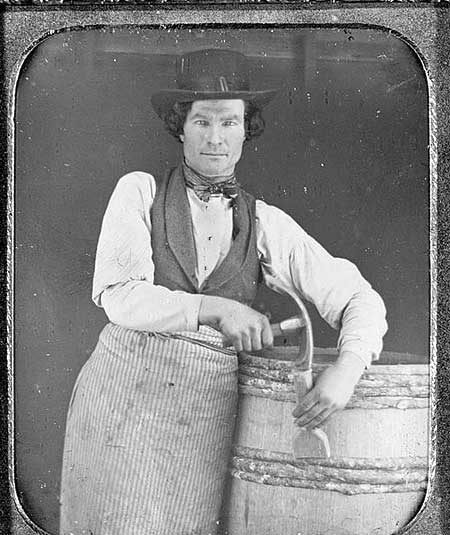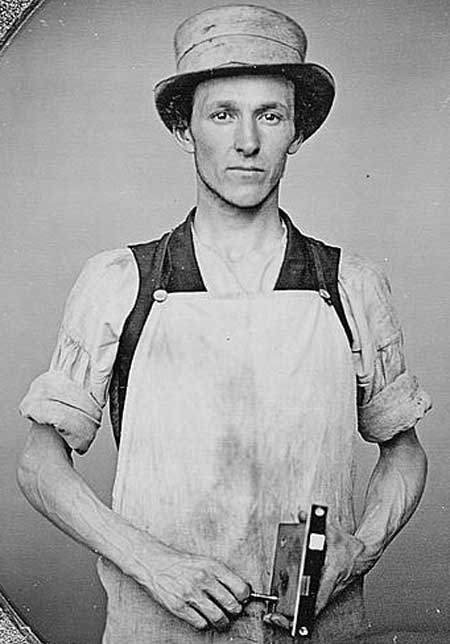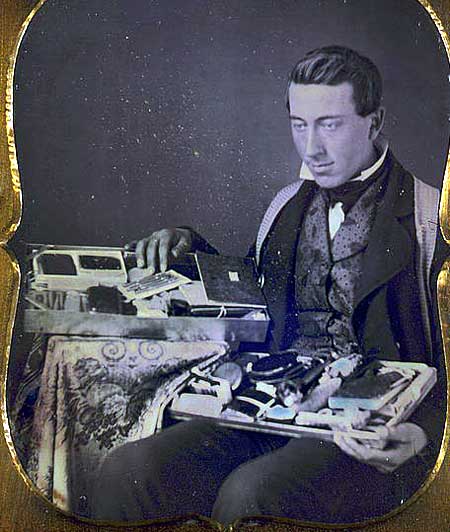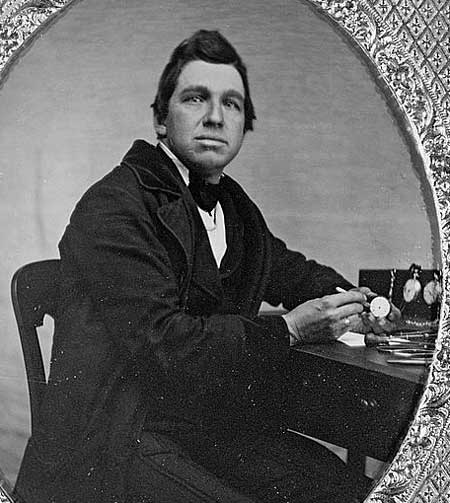Daguerreotype photography was introduced in 1839 and was quickly spread to the US by Samuel Morse, inventor of the telegraph. The equipment needed was relatively lightweight and the materials relatively inexpensive. An entire business community sprang up with gypsy photographers travelling from town to town, allowing residents to purchase a true portrait. Prior to this, only the wealthy could afford painting portraits, but the advent of the daguerreotype process meant even lower and middle class citizens could have a portrait made.
One of the most common styles of portrait was the occupational photograph. The itinerant photographer would visit a town and set up his studio in a hotel. Customers would come for their portraits and many would bring tools of their trade or work they had produced. These photographs give a unique glimpse into how average Americans dressed and what types of trade and work were common.




